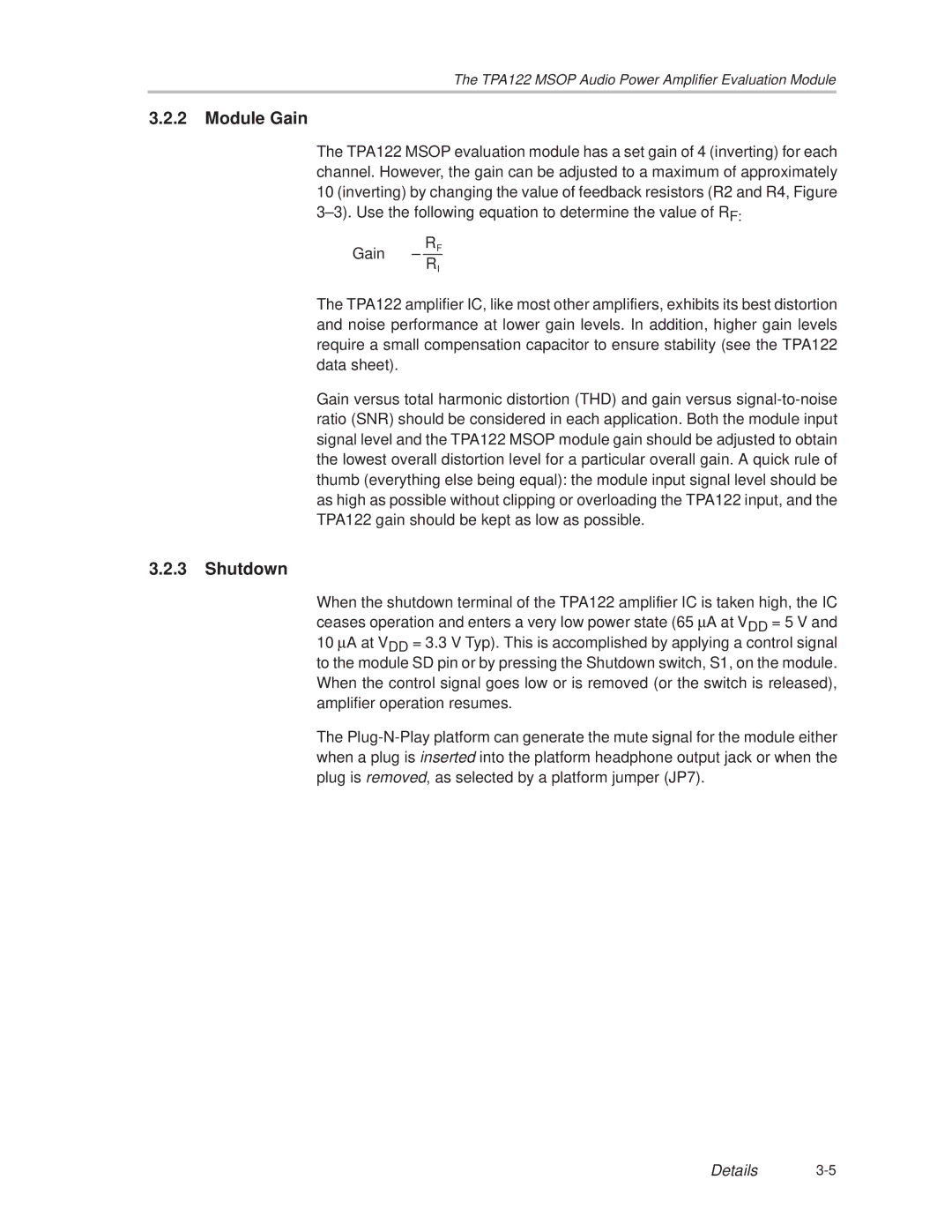SLOU025 specifications
Texas Instruments (TI) is renowned for its extensive portfolio of analog and mixed-signal integrated circuits, with the SLOU025 document detailing a very specific product that focuses on precision applications in various electronics. This document, often referred to in the industry, serves as a comprehensive resource for engineers and designers looking to understand the capabilities of TI's offerings.One of the main features highlighted in SLOU025 is the high level of precision. The products covered in this document are designed for applications requiring low noise and high accuracy. This characteristic is critical in fields like telecommunications, industrial automation, and medical devices, where even minor inaccuracies can lead to significant system errors.
SLOU025 showcases a range of technologies utilized in TI products, including advanced data conversion techniques. These technologies allow for the seamless integration of multiple functions within a single chip, reducing the overall footprint of electronic designs. This integration not only enhances performance but also simplifies the design process for engineers, enabling faster time-to-market for new products.
Another important characteristic mentioned is power efficiency. Many of the devices described in SLOU025 prioritize low power consumption while maintaining high performance levels. This is particularly important in battery-powered and portable applications, where energy efficiency has a direct impact on the overall usability and lifespan of the device.
The document also emphasizes the versatility of Texas Instruments’ products. With various configurations available, engineers can select the most suitable option for their specific applications, whether it be for automotive, communication, or consumer electronics. This adaptability makes TI components highly sought after in the competitive semiconductor market.
Furthermore, SLOU025 illustrates the commitment of Texas Instruments to continuous innovation. The company invests heavily in research and development to stay at the forefront of technology advancements, which is reflected in the superior performance metrics of its devices.
In summary, Texas Instruments SLOU025 functions as an essential guide for stakeholders involved in electronics design and implementation. It underscores the features of high precision, advanced data conversion technologies, power efficiency, versatility, and a commitment to innovation that collectively enhance TI’s offerings in the market. The detailed insights provided in this document empower engineers to make informed decisions that ultimately lead to the creation of superior electronic solutions.

